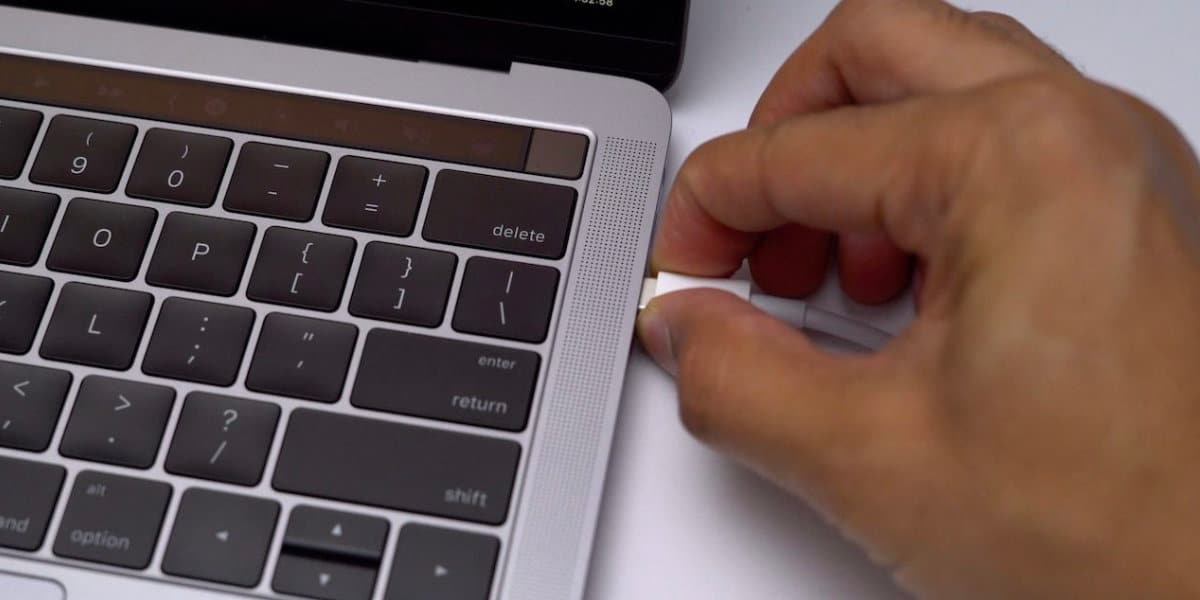
A very common mistake that we usually make is having our MacBook connected to electrical current. We get to the office, or home, we plug it into the power, we work with it, and we turn it off when we're done, but we don't unplug it from the charger.
The downside is that if we do not need to transport it, it may take a long time until we disconnect it from the power again. And more at this time with teleworking the order of the day. We have to remember to disconnect it from the current from time to time and work with it so that the battery is partially discharged, if not the we will deteriorate.
We may have a MacBook instead of an iMac because we sometimes work with it outside of your regular table, whether at home or in the office. But it is possible that most of the time we have it fixed on a table, and for convenience, always plugged in to the current. Big mistake.
If you leave your MacBook, MacBook Air or MacBook Pro always connected to the power, the battery suffers wear for being fully charged all the time. Over time, the maximum charged capacity decreases and you lose many minutes, even hours, of usable time.
It is just a characteristic of lithium ion batteries in all laptops and almost all modern electronic components that have a rechargeable battery. Obviously, on an iMac it won't happen to you.
Let's see some tips to manage your MacBook's battery, and prevent it from degrading more than necessary over time.
- Unplug every now and then your MacBook, or almost every day, and let it drop to 30 to 40 percent of its capacity.
- Do not download completely the battery regularly, that is, do not let it drain completely.
- In version 10.5.5 of macos catalina, make sure Battery Status Management is enabled on the Battery tab of Power Saving preferences by clicking Battery Status.
- En Big Sur macOS, you will have more modern options enabled by default.
A little trick: If you usually always have your macBook on the same desk, and you have it running certain hours a day regularly, connect a with a timer between the wall socket, and the MacBook socket. Set this timer so that the power goes off for two or three hours a day while you work. So sure that part of the battery will discharge, and it will cycle daily. This will keep the battery active, and prolong its life.
https://communities.apple.com/es/thread/160024125
It is so difficult to verify, before publishing something like this "Note".
Despite all the regrets, from my experience with several MacBook, the battery maintains its charge over the years and hardly loses… ..who …… it ends up swelling inexorably in about 4 or 5 years—–
As much as Apple says, which is logical, that it carries electronic regulation and protection, it swells.
Disconnecting it is not a solution.
I have a macbook with macOS Catalina and I usually work with an external monitor, keyboard, and mouse, with the MacBook lid closed.
If I turn off power, the external monitor disconnects and you can't work anymore.
Good article!
But it generates a doubt in me. Is it advisable to do it today, with the latest version of Catalina, 10.15.7?
I am a user who occupies my macbook air 2019 connected to the current always, for the issue of avoiding battery cycles, and it is the same Mac that only begins to discharge until it reaches a certain% and then recharges it.
Apple has implemented "smart charging" for batteries to accommodate user habits and prevent them from being plugged in long after reaching full charge. If you usually disconnect the charger at 8:00, the system takes care of interrupting the charge at 80% and resuming it with enough time to reach 100% only shortly before 8:00.
This has applied for more than a year to all Apple devices.
Apple has implemented "smart charging" for batteries to accommodate user habits and prevent them from being plugged in long after reaching full charge. If you usually disconnect the charger at 8:00, the system takes care of interrupting the charge at 80% and resuming it with enough time to reach 100% only shortly before 8:00.
This has applied for more than a year to all Apple devices.
By having the power continuously connected, it does not damage the battery even when it has already reached 100% of its capacity. Theoretically today when the charge reaches 100% it automatically disconnects and does not damage the battery.